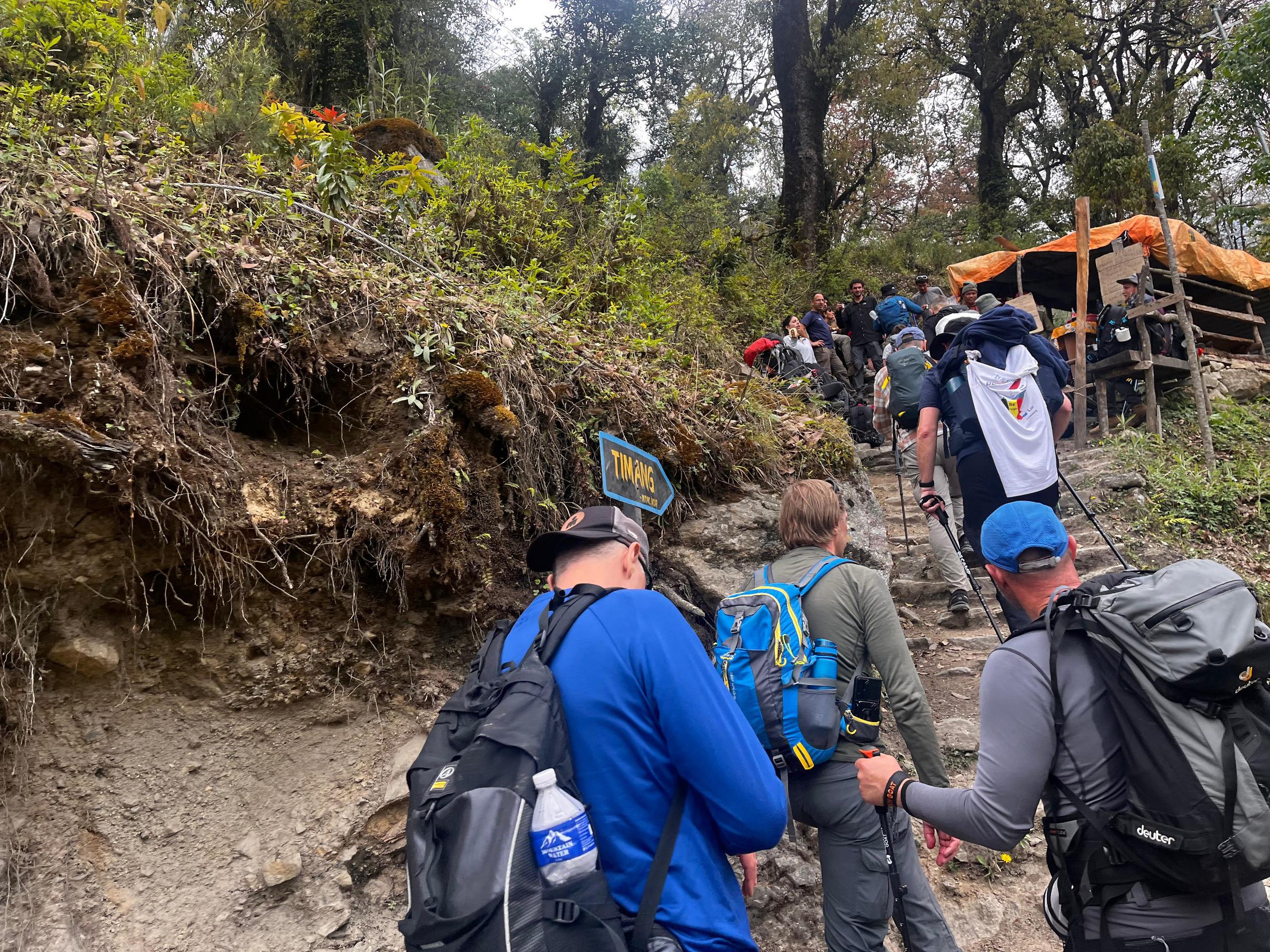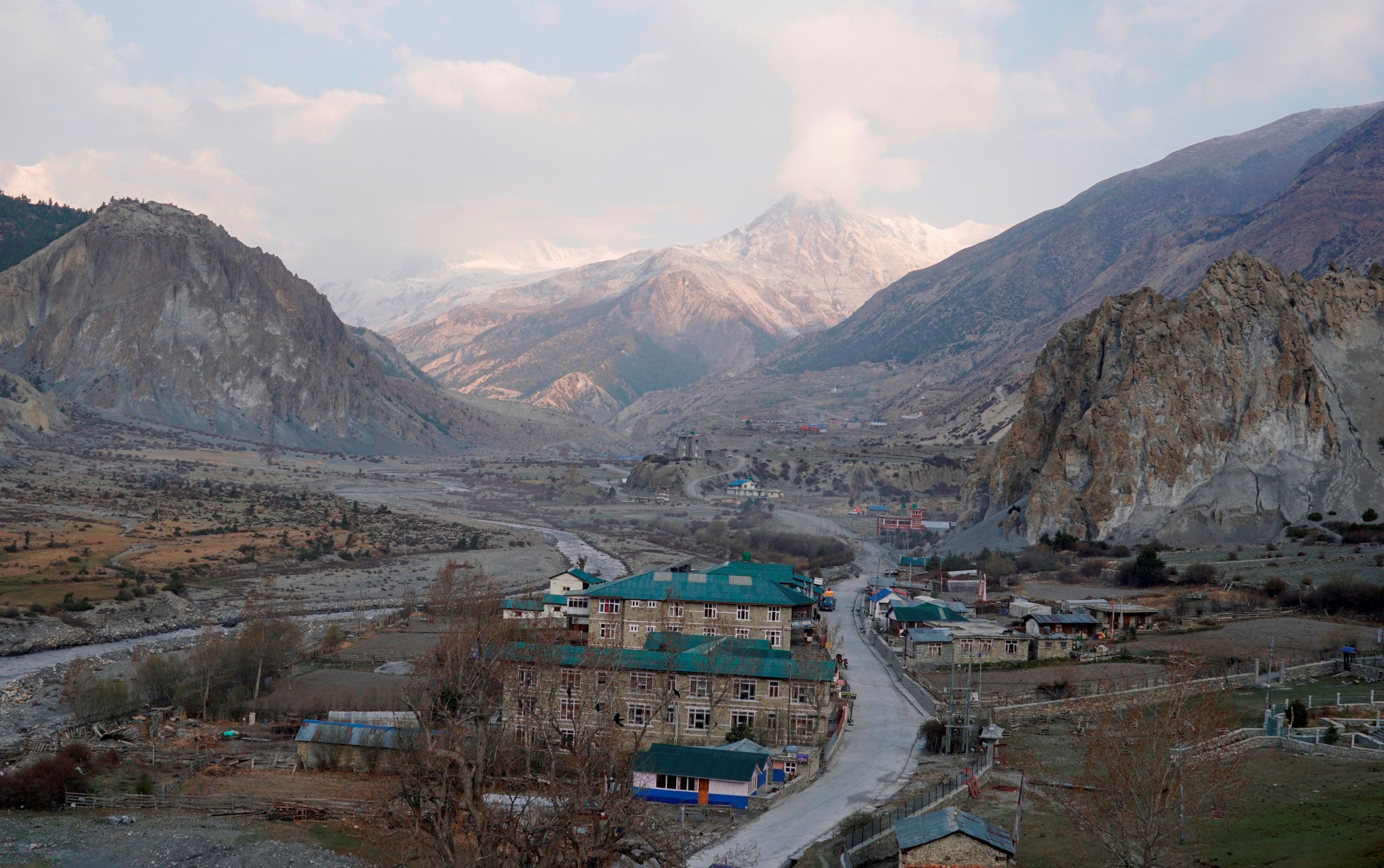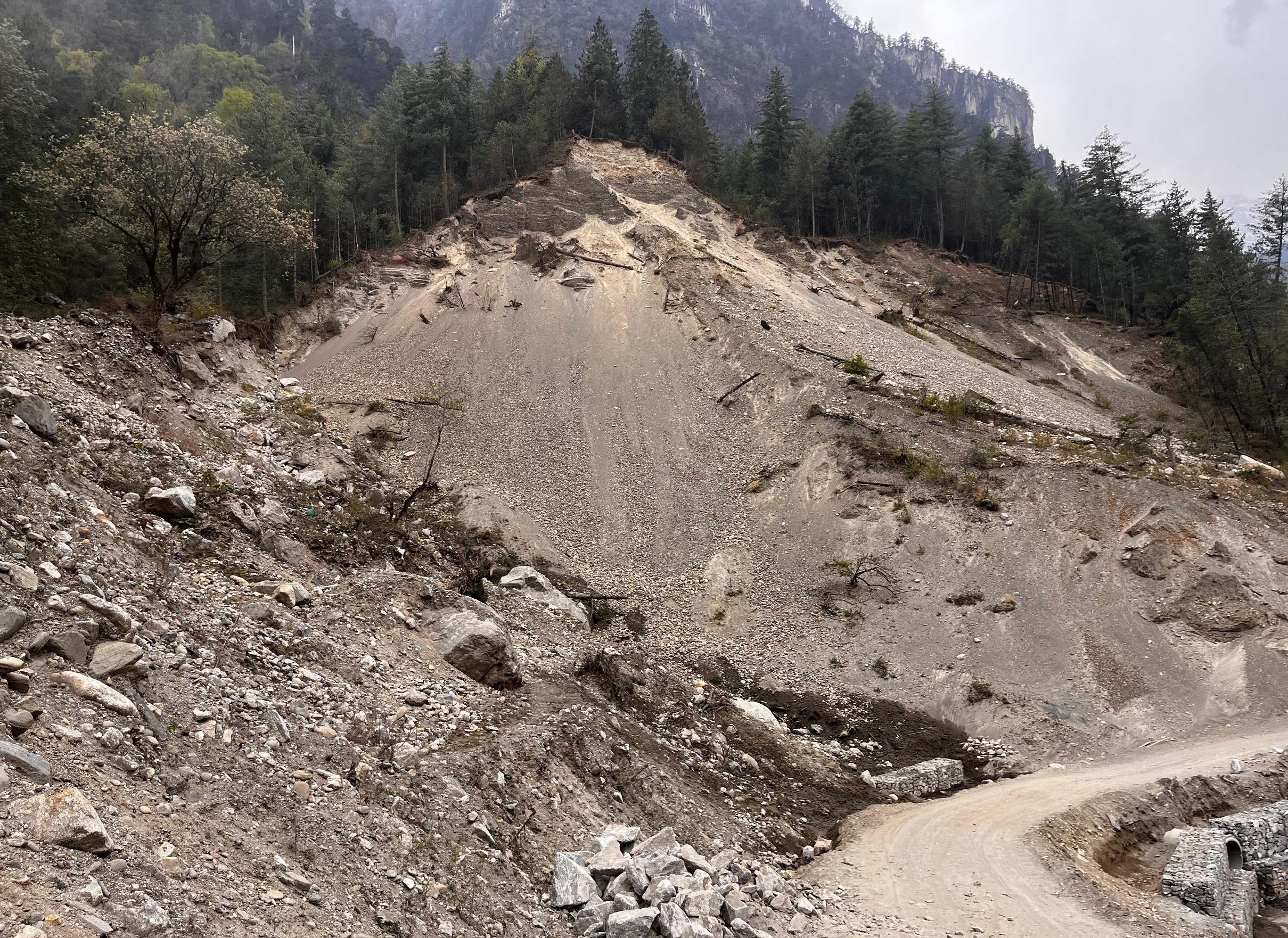Trailing off in Manang
Trekking routes are being replaced by roads along the Annapurna Circuit, affecting local livelihoodsFrench citizen Louis arrived in Nepal for the first time earlier this year, planning to trek the Annapurna Circuit before heading down to Bardia to hopefully catch a glimpse of some tigers.
Before he began his journey from Besisahar, Louis (who only revealed his first name) had imagined breathing crisp mountain air, and following the melodious gurgle of the Marsyangdi.
Instead, he had to breathe fumes and dust all the way to Chame. Louis says he masked his face with a handkerchief: “It was not what I expected, this is not right.”

Many other trekkers are similarly disappointed as roads have been built along what used to be walking trails.
Manang and Humla are the last remote regions in the Himalaya to be connected to the national road network. Construction of the 87km Besisahar-Manang road began in 1994, but was stalled during the Maoist conflict, and finally finished in 2012.
Most of it has not yet been blacktopped, and sections have been carved out of vertical cliff faces, making them treacherous. But it has allowed road access to Manang, a journey that previously took a week on foot.

While the road has improved access, it has impacted on trekking tourism — the mainstay of Manang’s economy. The number of tourists visiting the scenic valley behind the Annapurnas grew from 21,245 in 2023 to 30,866 in 2024.
The Annapurna Circuit is known for unique sights like Tilicho, one of the highest lakes in the world, the Thorong La pass that connects Manang to Mustang, and the valley’s own rich cultural heritage.
Thorong La at 5,416m is the highest hiking pass in the world, and was used by locals for trade with Mustang before it became a popular trekking route.
“For guests, the excitement of reaching Thorong La is now overshadowed by their disappointment of having to journey through dusty roads to get there,” says Manang lodge-owner Ongma Gurung. “That is the complaint we get the most.”
Local tourism operators are trying to get the government to build alternative foot trails. But there have been delays due to a lack of budget.

The Naso Rural Municipality has identified other routes along the Annapurna Circuit in Chyamche, Tal, and Khotro so trekkers can bypass heavy vehicles involved in the construction of the Manang-Marsyangdi Hydropower Project.
“But the local government cannot do everything,” admits the chair Dhan Bahadur Gurung. “And for leaders in Kathmandu, Manang is out of sight and out of mind.”
Munindra Jung Gurung represents Manang in the Gandaki Provincial Assembly, and says he has raised the issue in Pokhara. He is hopeful there will be a hearing.
To be sure, the road is not all bad news. Locals benefit, the number of visitors has grown, and trekkers can now also save time and use it to explore side valleys in Manang, visiting the villages like Nar and Phu.
Annapurna Conservation Area (ACA) chief Rabin Kadariya concedes that the road to Upper Manang was crucial to connect the remote region with the rest of Nepal, but adds: “We have built an alternative trail connecting Talgaun, and we will consult local communities about their priorities on other hiking trails.”




